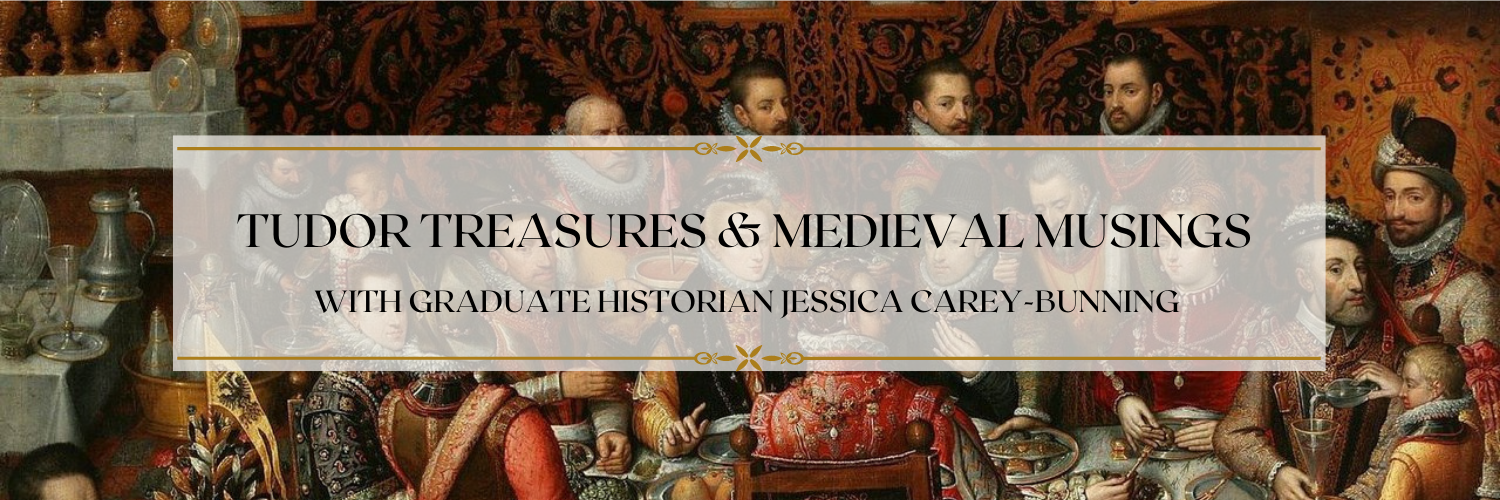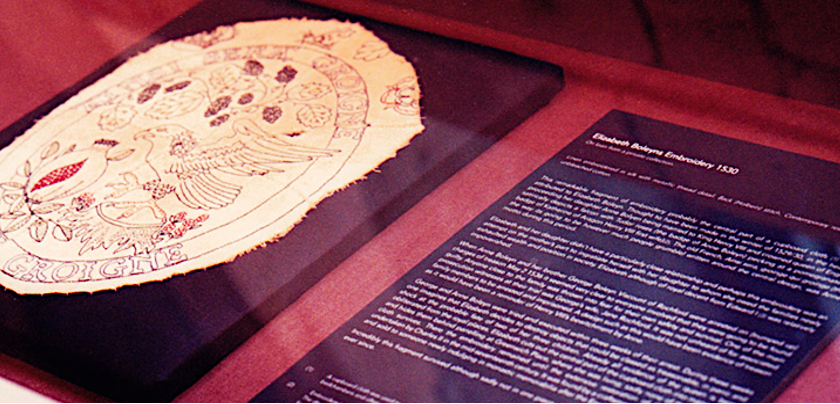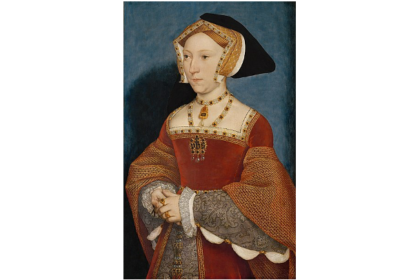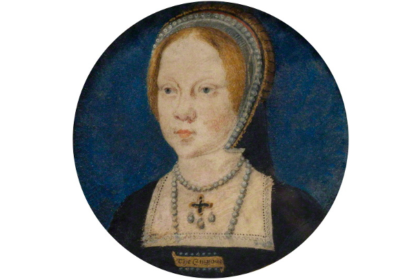In 2003, a small but remarkable piece of embroidery was put on display for the first time in an exhibition at the Museum of Garden History (now known as the Garden Museum).
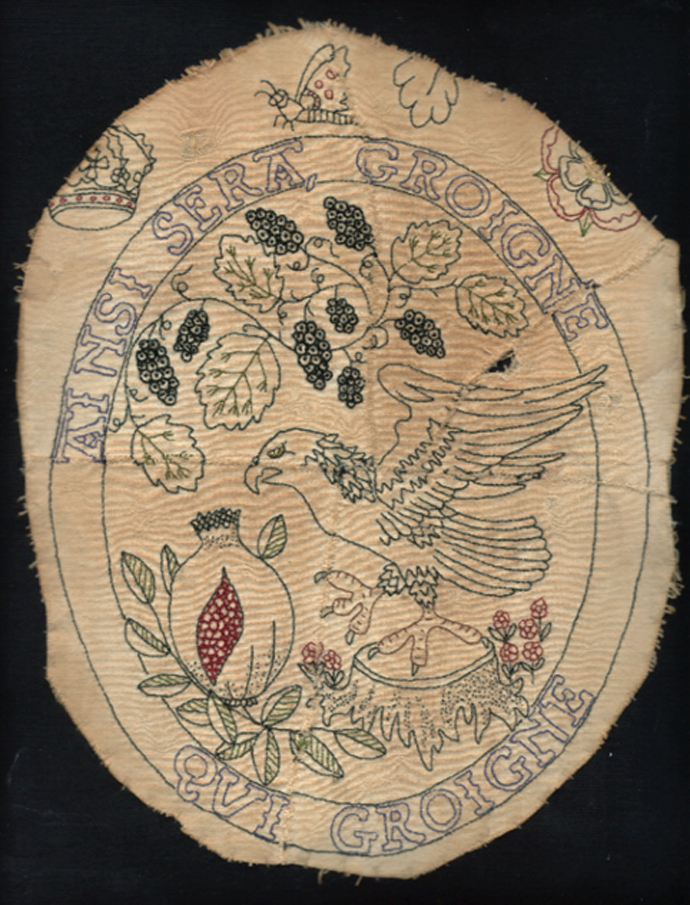
The embroidered image showed a falcon pecking at a pomegranate, with the words ‘ainsi sera, groinge qui groinge’ (Let them grumble; that is how it is going to be). This motto was briefly adopted by Anne in 1530, and this, along with the lack of royal regalia, provides strong evidence for this date. It is believed to have been created by Anne’s mother, Elizabeth Boleyn, as part of a cupboard cloth. Apparently it was hidden behind some panelling in Greenwich Palace until it was discovered in them mid-17th century during some renovations undertaken by Charles II.
The pomegranate was Katherine of Aragon’s emblem, so to show Anne’s falcon pecking at it was a bold, perhaps facetious, statement of Anne’s supremacy over the down-trodden Katherine.
Unfortunately, this is all a fabrication.
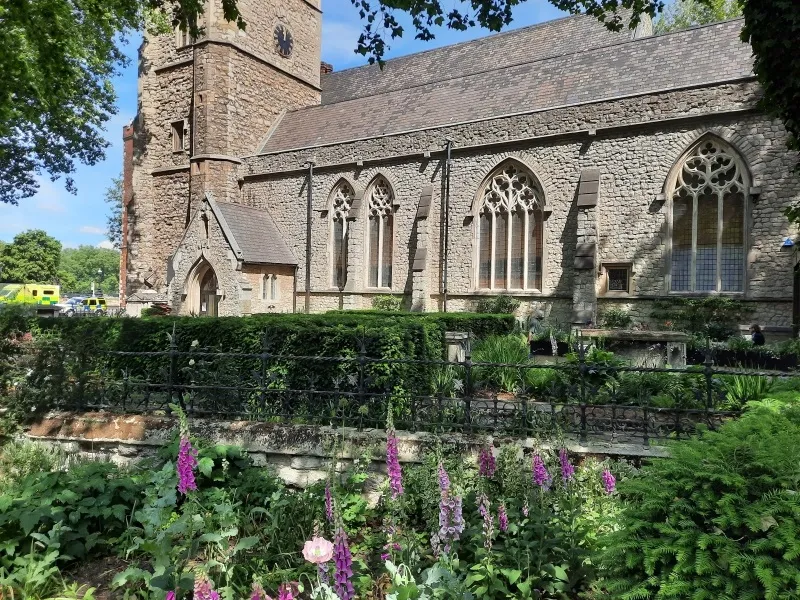
In fact, the piece is a modern creation by artist Suky Best. In 2003, she was commissioned to create a piece of art for the Exhumed exhibit, along with 23 other artists. The theme of the exhibit was ‘notions of storytelling, ancestry, memory and interpretation of history.’ The Museum of Garden History is located in an old church, St. Mary-at-Lambeth, where Elizabeth Boleyn was buried after her death on the 3rd April, 1538. With this in mind, Best set out to create a piece of embroidery that could have been made by Elizabeth Boleyn. In consultation with the Victoria and Albert Museum, she used authentic, 16th century stitching techniques, and aged the cloth to look the part. After the embroidery was finished, Best then crafted the history to go along with it.
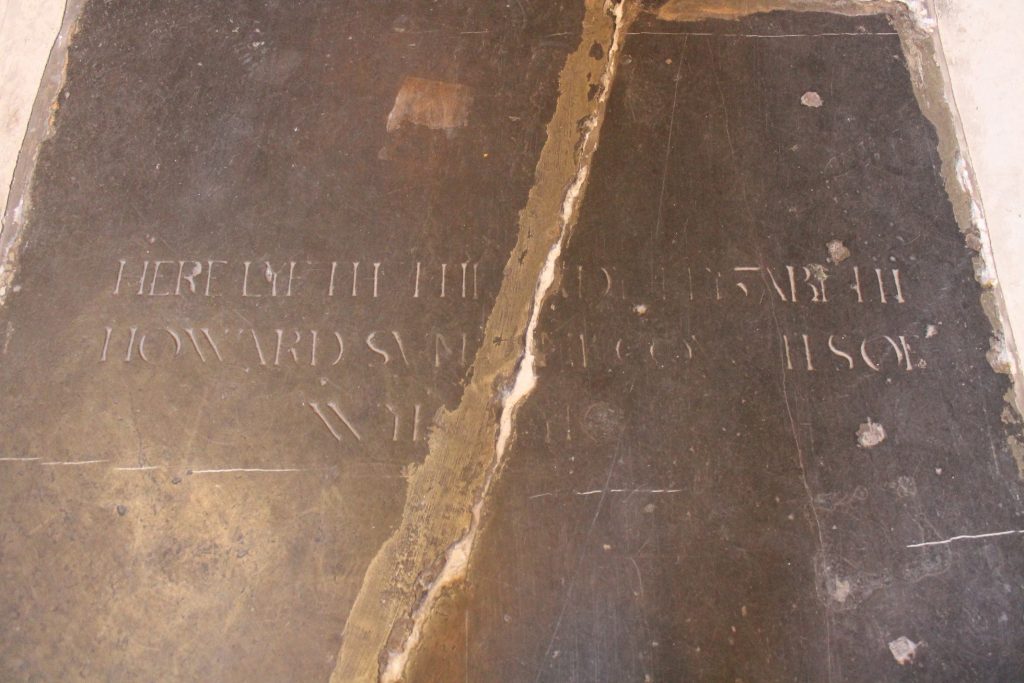
Best states that given the theme of the exhibit, and the relative obscurity of the museum, she never expected it to be taken seriously; an article in the Guardian newspaper at the time refers to her creation as ‘fictitious.’ Unfortunately, some took the display at face value, and Best has had to refuse multiple requests over the years by museums who believed that it was an authentic piece of Boleyn history.
Fortunately, Best based her design upon a wonderful, genuine contemporary image.
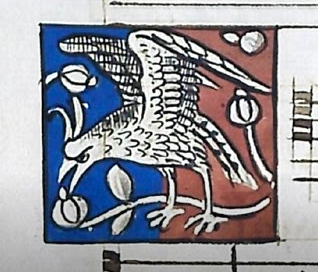
The Royal College of Music holds one of the few extant books that is believed to have been owned by Anne Boleyn. It is a music book that consisted of 37 Latin motets and 5 French chansons. It is believed to have been a gift to Anne; the poor quality of the manuscript, which is made of paper rather than vellum, is unfinished and frequently corrected, and has decidedly old-fashioned illuminations, suggests that it was given to her by a lower-status supporter–subsequent events have made it tempting to think that Mark Smeaton may have been the gifter, but there is no evidence for this beyond his later association with Anne.

Nevertheless, here are several very interesting features of this manuscript, including a signature that reads ‘Mistress A Bolleyne – Nowe Thus.’ This motto was used by the Boleyn family at least as far back as Anne’s great-grandfather, and was thereafter used by several members of the Boleyn family. Although it is commonly said that the book was given to Anne around the time of her coronation, this inscription suggests that it was in Anne’s possession before she became queen or even marchioness.
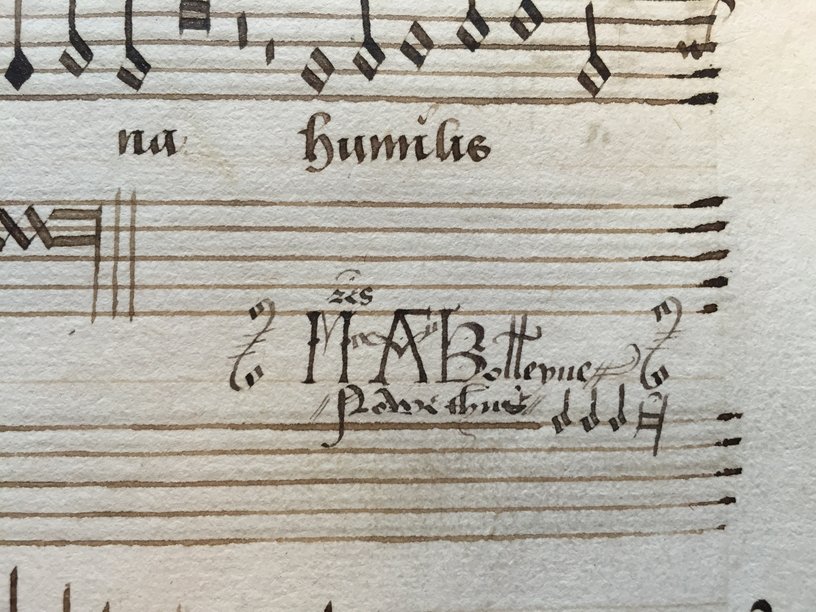
On page 4 of the manuscript is an illumination of Anne’s falcon pecking at Katherine’s pomegranate. The design is perhaps not as impressive as Best’s make-believe design, but nevertheless, it still conveys the strong message of Anne not only supplanting Katherine, but viciously destroying her. Whether this illumination was based upon a design that Anne had already given her approval to, or was the idea of her supporter, it is very revealing of the attitudes within the Boleyn faction.

So although the wonderful story of Elizabeth Boleyn embroidering a cupboard cloth with a symbol of her daughter’s aspirations has turned out to be just that, a story, we do still have this bold image of Anne’s falcon destroying Katherine’s pomegranate.
